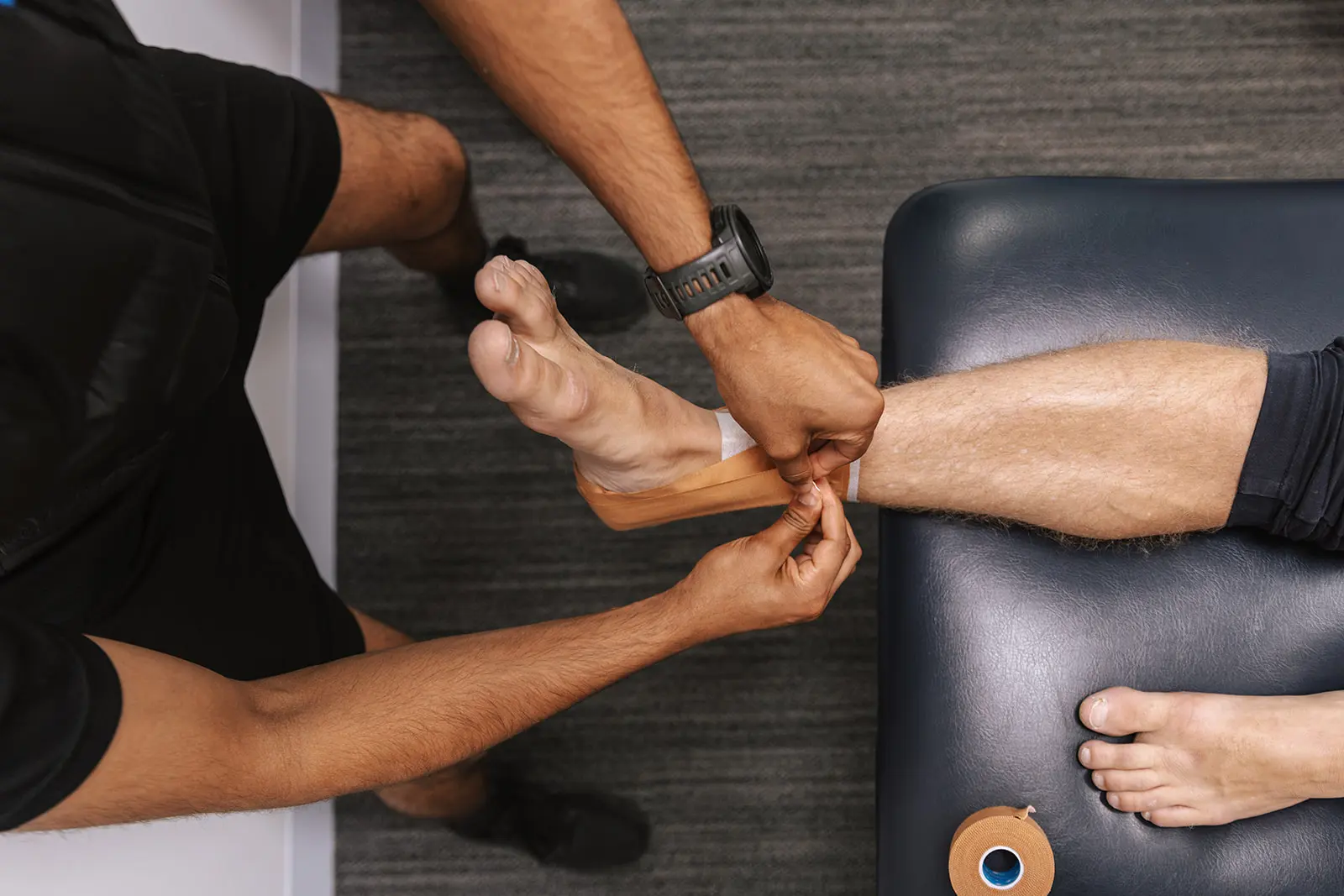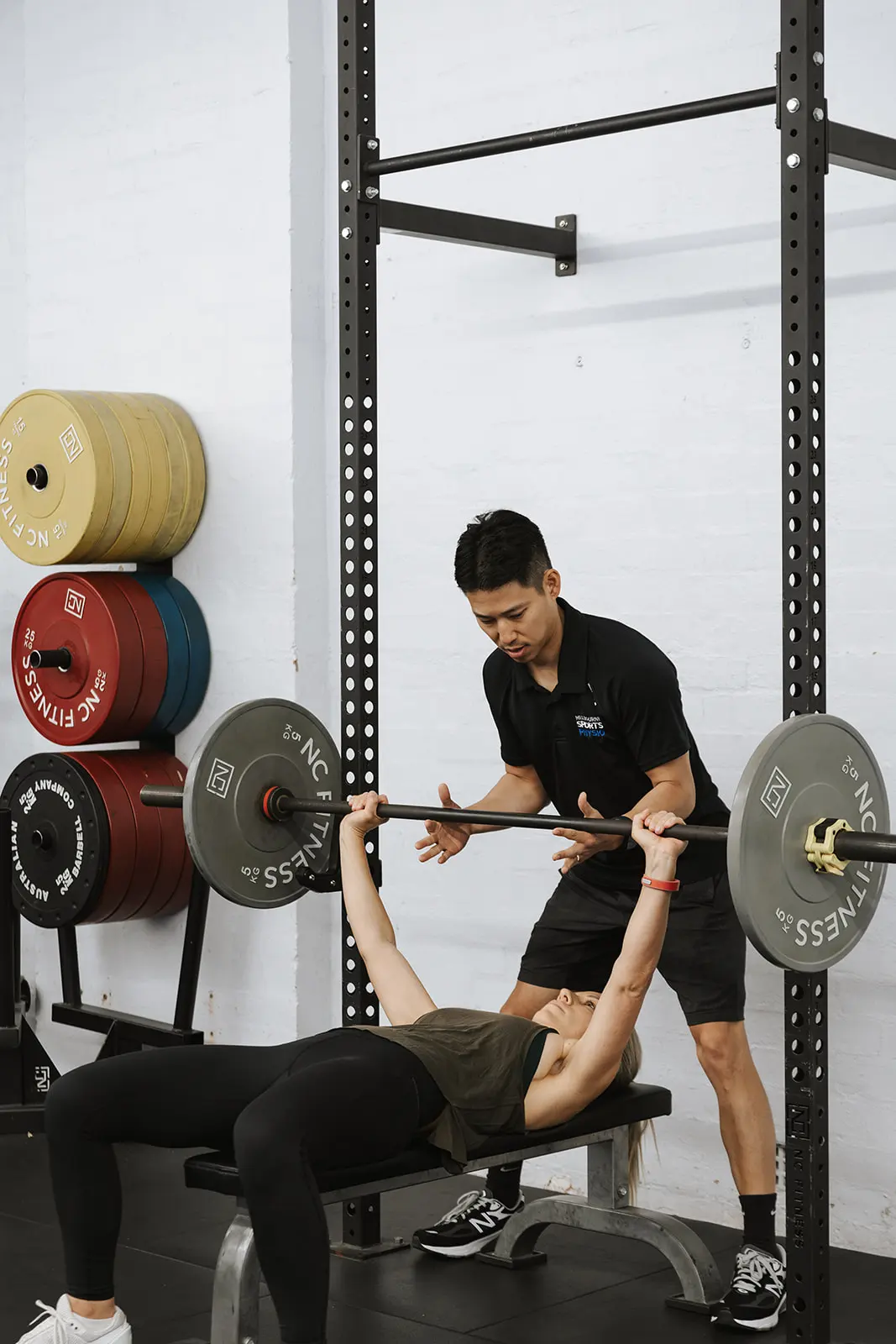August 2025
Andrew Lay, Physiotherapist
Physiotherapy for Basketball Players: Injury Prevention, Muscle Recovery & Game-Ready Programs
Every weekend across Australia, basketball courts come alive.
You’ll find kids racing across hardwood floors, teens perfecting their jump shots, and adults reliving their prime in after-work leagues. But behind the fast-paced action is a harsh reality—basketball is tough on the body.
Take Mia, a 14-year-old who dreams of making her high school team.
After weeks of training, her knee begins to ache. Her parents dismiss it at first, thinking it’s just growing pains. But the pain worsens until she can barely climb stairs.
A physiotherapist later diagnoses her with “jumper’s knee” and puts her on a recovery plan tailored to her age, growth stage, and training load.
Mia's story is common.
Whether you're an amateur or a professional, male or female, youth or adult, physiotherapy can be the difference between sitting out injured and performing at your best.
Book Online Now to Fix Your Body
Key Takeaways:
-
Physiotherapy is essential for preventing and recovering from common basketball injuries
-
Programs differ based on age, skill level, and gender-specific risks, particularly for female athletes
-
Muscle recovery and active strategies are just as important as the training itself
What our clients are saying about us
Physiotherapy for Basketball Players: Why It Matters
Basketball demands a lot from the body. Explosive jumping, sudden pivots, and fast-paced contact make it one of the most injury-prone sports. But physiotherapy doesn’t just treat injuries—it helps players avoid them altogether.
Physiotherapists work to:
-
Improve how athletes move
-
Address muscle imbalances and poor mechanics
-
Enhance flexibility, strength, and endurance
-
Shorten recovery time between games
-
Rehabilitate players safely after injuries
Whether you're a local club player or competing at the national level, integrating physiotherapy into your routine can significantly extend your playing years.
Basketball Injury Physiotherapy: Common Injuries and How Physio Helps
Basketball injuries often result from overuse, poor technique, or high-impact collisions. Here are the most common injuries and how physiotherapy addresses them:
Ankle Sprains
-
Caused by landing awkwardly
-
Physio focuses on ankle stability exercises, taping, and balance retraining
Jumper’s Knee (Patellar Tendinopathy)
-
Caused by repetitive jumping and overload
-
Treated with eccentric strengthening exercises and load management
ACL Injuries
-
Often from sudden changes in direction or contact
-
Pre- and post-surgical rehab includes strength, neuromuscular, and proprioception training
Shin Splints
-
Result of overtraining or poor footwear
-
Treated with soft tissue therapy, load management, and footwear assessment
Rotator Cuff Strains
-
From reaching, shooting, or blocking
-
Physio helps restore shoulder mobility and stabilisation
A physiotherapist’s role goes beyond just addressing pain. They identify movement patterns and training habits that could lead to injury and guide the athlete through a structured recovery and prevention plan.
Book Online Now to Fix Your Body
Sports Physio for Basketball: More Than Rehab
Sports physios specialise in performance as well as recovery. In basketball, this means:
-
Improving core stability and joint control
-
Strengthening single-leg landing mechanics
-
Teaching players how to warm up and cool down effectively
-
Supporting overall agility, speed, and power
According to the Journal of Orthopaedic & Sports Physical Therapy, neuromuscular training programs can reduce ACL injuries by up to 70%. These programs are especially critical for younger athletes and female players, who face higher injury risks due to anatomical and hormonal factors.
Sports physio also incorporates strength and conditioning methods tailored for basketball demands, helping athletes avoid both acute injuries and long-term degeneration.
Basketball Physiotherapy Programs: What to Expect
Tailored basketball physiotherapy programs typically include:
Initial Assessment
-
Identifying strength, flexibility, and movement deficits
-
Reviewing injury history and training load
Injury Prevention Plan
-
Focused exercises for glutes, hips, knees, and ankles
-
Movement prep drills such as lateral hops, single-leg landings, and resisted sprints
Strength and Conditioning
-
Plyometrics to build explosive strength
-
Controlled strength training with basketball-specific focus (e.g., hamstrings, calves, core)
Recovery Integration
-
Foam rolling, soft tissue massage, mobility work
-
Education on sleep, nutrition, and hydration
Programs differ depending on the athlete’s age, gender, and level of play. What works for a 14-year-old beginner won’t be appropriate for a 28-year-old semi-pro recovering from a knee injury.
Book Online Now to Fix Your Body
Youth vs. Adult Basketball Players: Different Needs, Different Care
Younger players are still growing. Their bones, joints, and muscles respond differently to stress compared to adults.
Youth Athletes:
-
Growth plates are still developing
-
More prone to overuse injuries like Osgood-Schlatter or Severs disease
-
Need focus on movement education and injury prevention
Adult Athletes:
-
More likely to experience joint wear-and-tear, tendon overuse, and chronic pain
-
Require targeted recovery and joint support strategies
Youth basketball players benefit most from early intervention. Identifying poor movement habits or muscular imbalances early prevents long-term issues.
Amateur vs. Professional Basketball Players
Amateurs often train and recover inconsistently, leading to preventable injuries. Professionals, by contrast, follow structured programs monitored by physios and performance teams.
Amateur Players Need:
-
Regular physiotherapy assessments
-
Guidance on warm-ups, load management, and footwear
-
Education on avoiding weekend-only intensity spikes
Professional Players Focus On:
-
Data-driven recovery protocols
-
Detailed monitoring of movement, hydration, and sleep
-
Ongoing physiotherapy as part of everyday training
Even at the amateur level, a few physiotherapy sessions can offer major insight into how to protect your body and play smarter.
Female Basketball Players: Injury Risks and Physiotherapy Needs
Female athletes are significantly more vulnerable to specific injuries—particularly ACL tears. Research suggests women are 2–8 times more likely to tear their ACLs compared to men.
This higher risk is due to:
-
Wider hips affecting knee alignment
-
Hormonal changes impacting ligament laxity
-
Less neuromuscular control in some movement patterns
Physiotherapy can reduce these risks by:
-
Strengthening the glutes and core
-
Teaching better landing and cutting techniques
-
Creating hormone-informed training cycles
A 2020 British Journal of Sports Medicine study found that structured physio-based neuromuscular programs reduced female ACL injury rates by over 50%.
Book Online Now to Fix Your Body
Muscle Recovery for Basketball Athletes: What Works
Recovery is a process, not a passive phase. Sore muscles are expected—but that doesn't mean players should ignore them.
Key physiotherapy-guided recovery techniques include:
-
Active recovery: Low-intensity walking or cycling to promote blood flow
-
Foam rolling and massage: Breaks up adhesions and promotes tissue repair
-
Cold water immersion: Reduces inflammation and perceived soreness
-
Hydration and nutrition: Supports cellular repair and glycogen replenishment
-
Sleep hygiene: 8–9 hours nightly for tissue regeneration
Physios often provide players with weekly recovery calendars based on training volume and game intensity.
Recovery Strategies for Basketball Players: Game to Game
Every player should develop a structured recovery plan to stay in peak condition throughout the season. That includes:
-
Cooling down with light cardio and mobility work
-
Rehydrating within 30 minutes of a game or training session
-
Refueling with carbs and proteins to aid muscle repair
-
Wearing compression garments to reduce swelling
-
Checking in with a physio every 4–6 weeks during season for ongoing screening
Players who don’t recover properly are more likely to suffer re-injuries and experience burnout by mid-season.
Conclusion: Physiotherapy as Part of Every Player’s Toolkit
Basketball players are often told to train harder, run faster, and shoot more. But they’re rarely told to recover smarter, move better, or prevent injury before it starts. That’s where physiotherapy becomes a game-changer.
Whether you’re a young athlete just starting, a weekend player trying to stay healthy, or an elite competitor aiming for longevity, physiotherapy belongs in your routine.
Book Online Now to Fix Your Body
Key Takeaways:
-
Physiotherapy helps you play longer, not just recover faster
-
Programs need to be age- and skill-appropriate, especially for female players
-
Recovery strategies must be active, intentional, and personalised
What can you do next?
-
Book an appointment with a physiotherapist familiar with basketball demands
-
Ask about injury screening and movement assessment
-
Start integrating recovery strategies into your weekly training schedule
Have you experienced a basketball injury or ongoing pain? Do you use physiotherapy as part of your routine? Let us know how it’s helped—or what you wish you’d known sooner.
Book online to feel great & move well again!
Super Simple with Instant Confirmation & No Login Required!
For consultation fees and more information, please visit our Fees and FAQs page or call us on 03 9498 0205.
Some types of consultations may require pre-payment or a deposit. 100% Money Back Guarantee (T&Cs apply).
Learn how our Melbourne Sports Physio Team can help you?
At Melbourne Sports Physiotherapy our goal is to get you moving pain free as soon as possible.
But, we also want you to actually move better and live a healthier, more active and fulfilling life!
If your sports, fitness training or work has been wearing your body down, book in with one of our expert massage therapists so we can help you reduce your pain or stiffness.
If you are showing some signs of this condition or simply want help prevent this from happening in the future then book in with one of our highly experienced Remedial Massage Therapists today!
You can make an appointment by calling or booking online.



